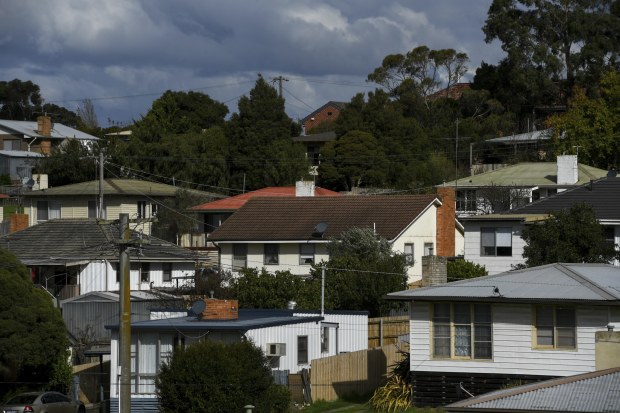Affordable housing generates $45,000 benefit for each tenant: study

Affordable housing schemes for essential workers generate $45,500 in broader economic benefits per tenant annually as well as stable returns for investors in the accommodation, new research shows.
Looking at such schemes funded by industry superannuation giant Aware Super, consultancy EY found they resulted in shorter commute times, more spending on leisure activities and increased productivity that in turn could represent a $64 billion boon for the economy.

In Victoria, there are more than 50,000 people and their families waiting for public housing. Penny Stephens
The Albanese government wants superannuation funds to help bankroll its ambitious plans to build 30,000 affordable homes in the next five years through its $10 billion Housing Australia Future Fund.
It is part of Treasurer Jim Chalmers’ goal of using superannuation savings to help finance “nation-building” initiatives such as housing and the energy transition, which he suggests will also benefit the broader economy.
Aware Super chief executive Deanne Stewart said the EY analysis, which was commissioned by the fund, showed the benefits of better enabling build-to-rent developments to the economy. She called on governments at all levels to accelerate policies that would do this.
At a local council level, this could involve “challenging long-held assumptions about higher-density developments within local planning considerations”, she said.
“We’d urge councils to engage in good faith negotiations on questions of density, particularly where a property is attracting really great tenants into a community.
“Our property managers tell us our tenants stay in our properties longer, they care for their homes really well, and with a high proportion of shift workers they’re not material contributors to local area peak-hour congestion.”
Ms Stewart called for land tax and stamp duty relief at state level, and constructive engagement in issues around zoning issues.
At a federal level, “allowing investors in affordable housing to access the same GST treatment as community housing providers would materially reduce the cost of development”, Mr Stewart said.
Her calls echo a similar push by the superannuation sector more broadly to remove the significant barriers to institutional investment in affordable and social housing currently in place through tax and planning reform and regulatory certainty.
Benefits
Under Aware’s affordable housing program, participating nurses, teachers and police live on average nine kilometres closer to their workplaces than before the program and in turn provide stable rental yield to the super fund.
The housing is offered at below-market rates but Ms Stewart said that on a risk-return basis it is still in members’ best financial interests compared to regular residential investments because of the stability of the rental yields.
“We don’t see a trade-off between affordable housing versus regular residential developments, as they complement each other,” Ms Stewart said.
“Through our essential worker housing program ... we’re having access to high-quality, longer-term tenants. This means we’re also seeing a reduction in tenant turnover and associated costs and in turn, adds to the attractiveness of these properties.”
According to EY, the $45,5000 economic benefit was split into $5800 in cash benefit to the tenant, $2000 in increased leisure time to the tenant thanks to 112 hours less commuting time on average, and $33,000 in staff productivity and retention benefits to employers. There were also sundry benefits such as local community retail spending.
If the $45,500 per tenant in EY’s analysis, which was commissioned by Aware, was extrapolated out to include all 1.4 million essential workers living in Australia’s capital cities, the economic benefit annually could be worth $64 billion.
Aware’s residential and affordable housing investments helped cushion its property portfolio from plummeting commercial real estate writedowns last financial year, with the overall asset class returning around 450 basis points above the industry benchmark.
Introducing your Newsfeed
Follow the topics, people and companies that matter to you.
Find out moreRead More
Latest In Tax & super
Fetching latest articles